Inbox and Environment News: Issue 426
October 27 - November 2, 2019: Issue 426
500,000 Prawns Stocked Into Narrabeen Lagoon!
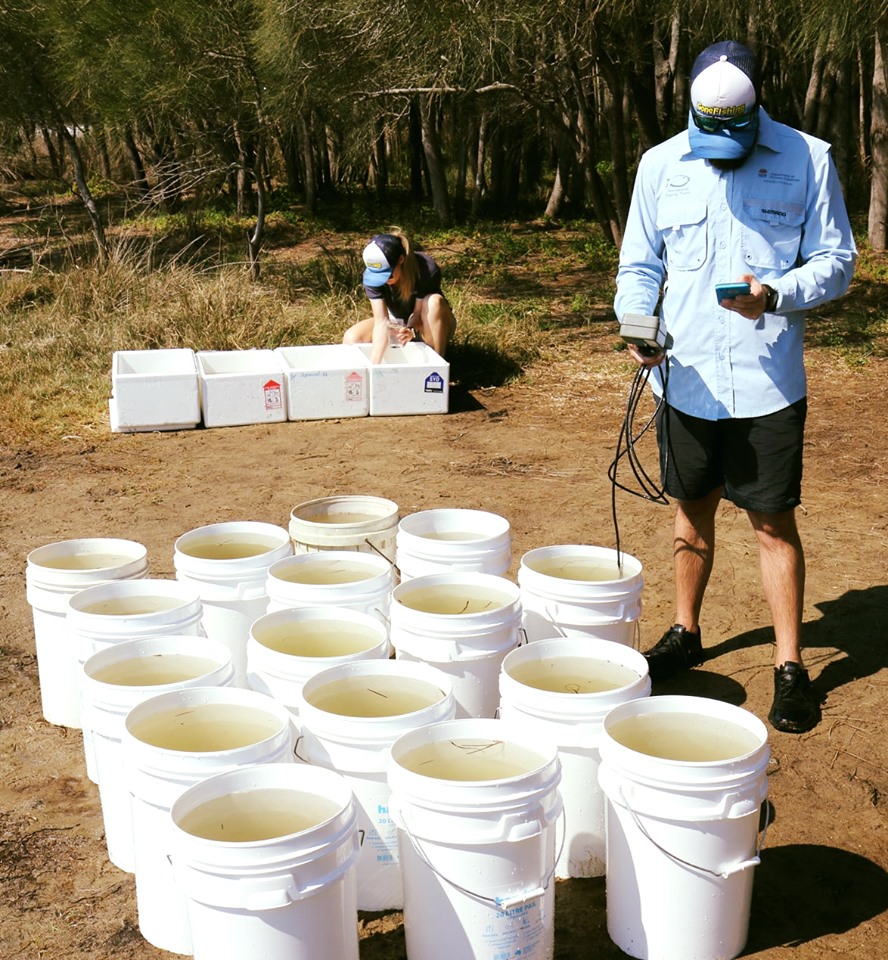
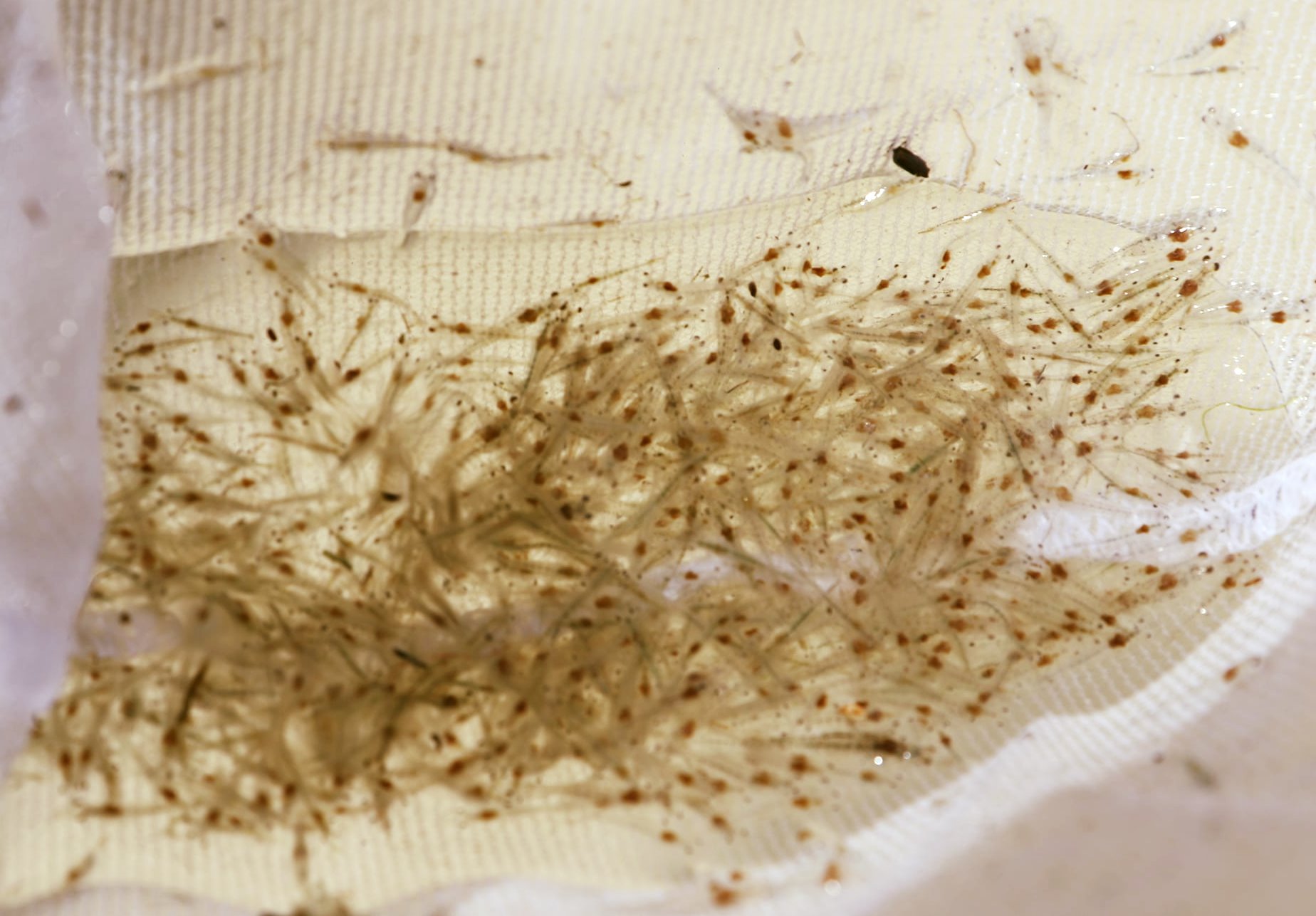
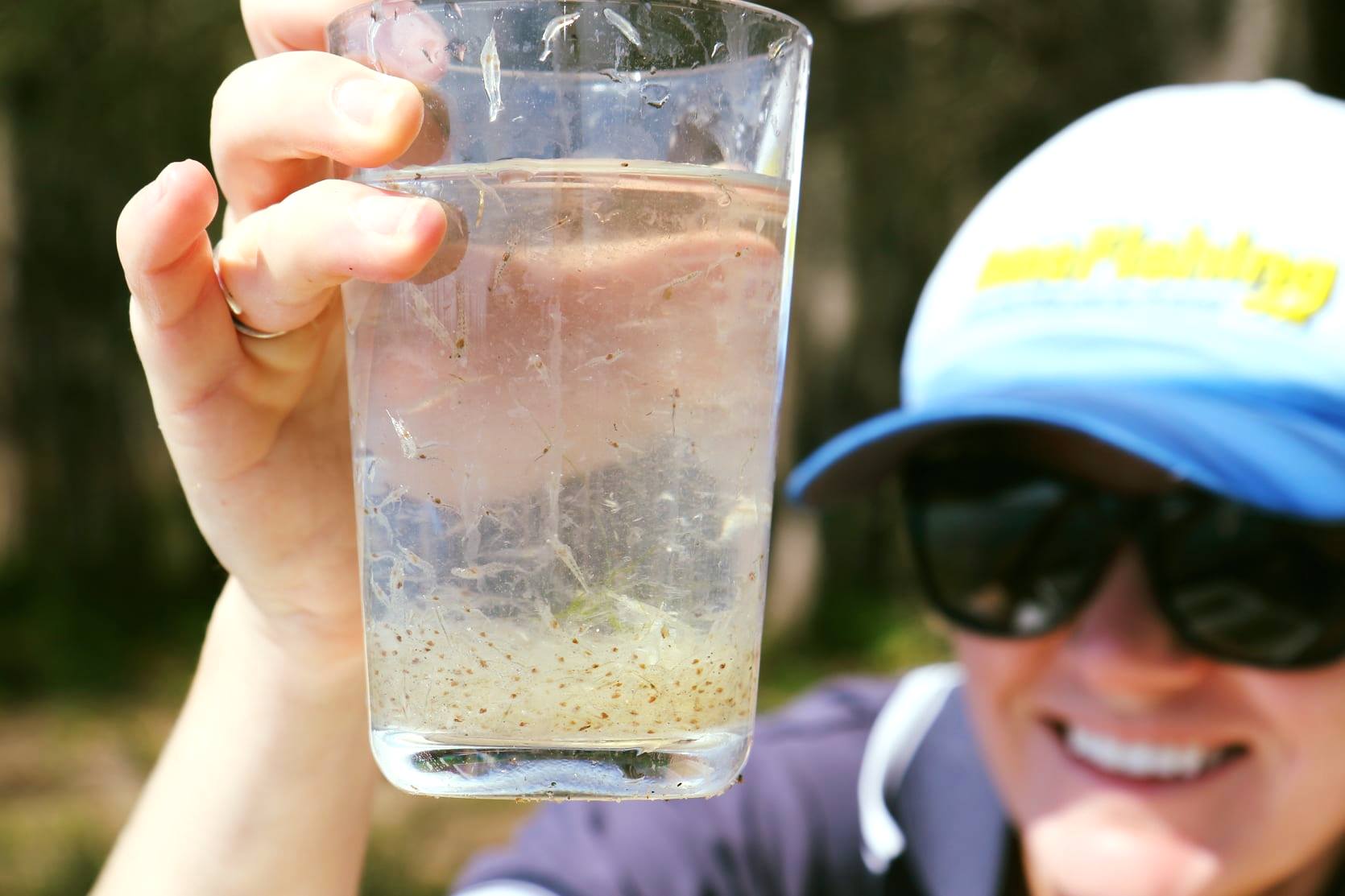
Citizen Scientists Butterfly Project
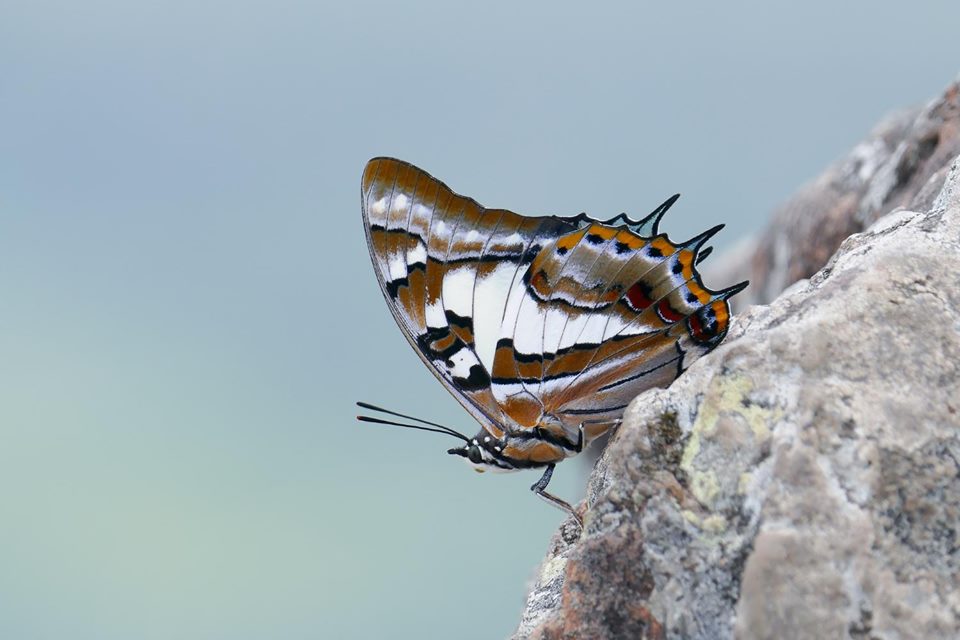
Australian Pollinator Week 10-17 November
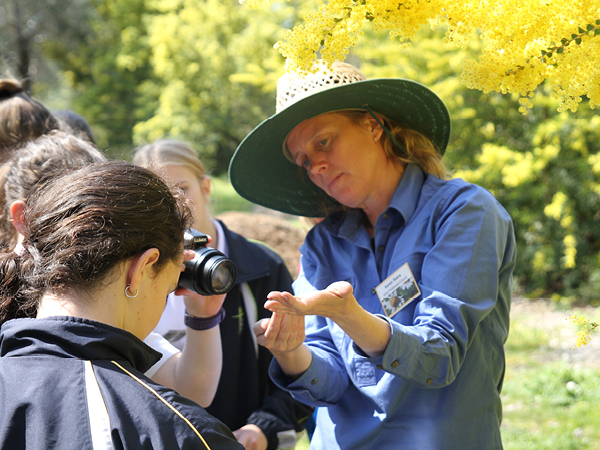
47 Experts Urge NSW Government To Defend NSW Law And Climate
- Emissions from burning coal (Scope 3 emissions) are by far the largest source of greenhouse gas from coal mined in NSW.
- An important legal decision in the NSW Land and Environment Court found that the full impact of coal mines on climate change, including emissions from burning the coal must be considered in assessing new coal mines. It also rejected many long standing arguments by the coal industry for avoiding considering these emissions.
- The coal lobby has run a relentless campaign against this legal precedent, including unprecedented and misleading attacks on the state’s Independent Planning Commission.
- It has been reported that the NSW Government will cave in to pressure from the coal lobby and change the law to prevent emissions from the burning of coal being considered in the assessment of new coal mines.
NSW Government Must Defend Law And Climate From Coal Industry Attacks
ICAC Inquiry Into Lobbying Shows Serious Gaps In Transparency
The Lobbyist Contact Register records meetings between the Department and Third Party Lobbyists and is kept in accordance with the Engaging with Lobbyists and Business Contacts Policy and Procedure.All contact with registered lobbyists is recorded using the Lobbyist and Business Contact Meeting Request Form and is published on the Register, which is publicly available through the Department's website.The Register is maintained in accordance with the Policy and Procedure, which provide a transparent and accessible system for lobbyists and business contacts.
The NSW Minerals Council is the leading industry association representing the state’s minerals industry...the NSW Minerals Council works closely with government, industry groups and business and community leaders to foster a sustainable mining industry in NSW
Bilgola Beach Clean Up
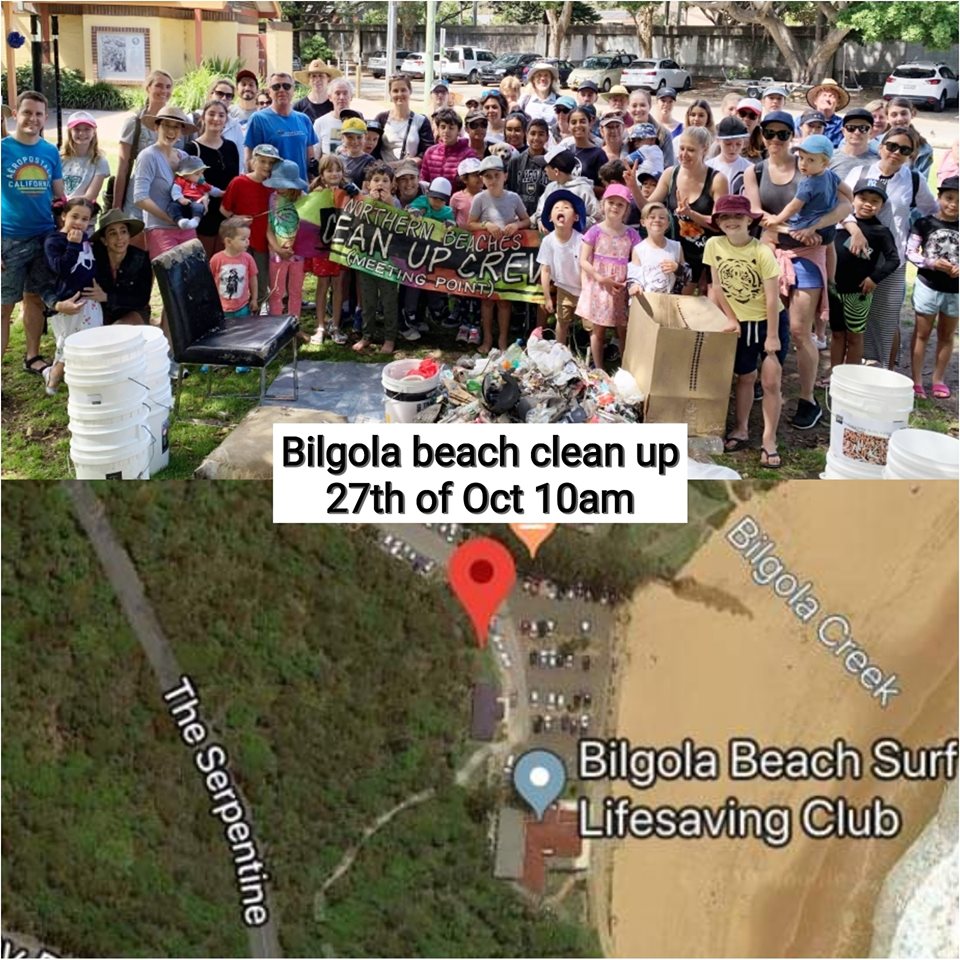
Floating Landcare Wins 2019 NSW Landcare Award
Australian Government Individual Landcarer Award – Nerida Croker
Australian Government Partnerships for Landcare Award – Floating Landcare
Australian Government Landcare Farming Award – Amarula Dorpers
Australian Government Innovation in Agriculture Award – Land to Market
Virgin Coastcare Award – Take 3 Ltd
Australian Community Media Landcare Community Group Award – Martindale Creek Catchment Landcare Inc
Woolworths Junior Landcare Team Award – Megalong Valley Public
Indigenous Land Management Award – Aunty Francis Bodkin
Austcover Young Landcare Leadership Award – Richie Benson
If you enjoy working with others, travelling by water, and have a yearning for adventure with an environmental twist Floating Landcare is for you.
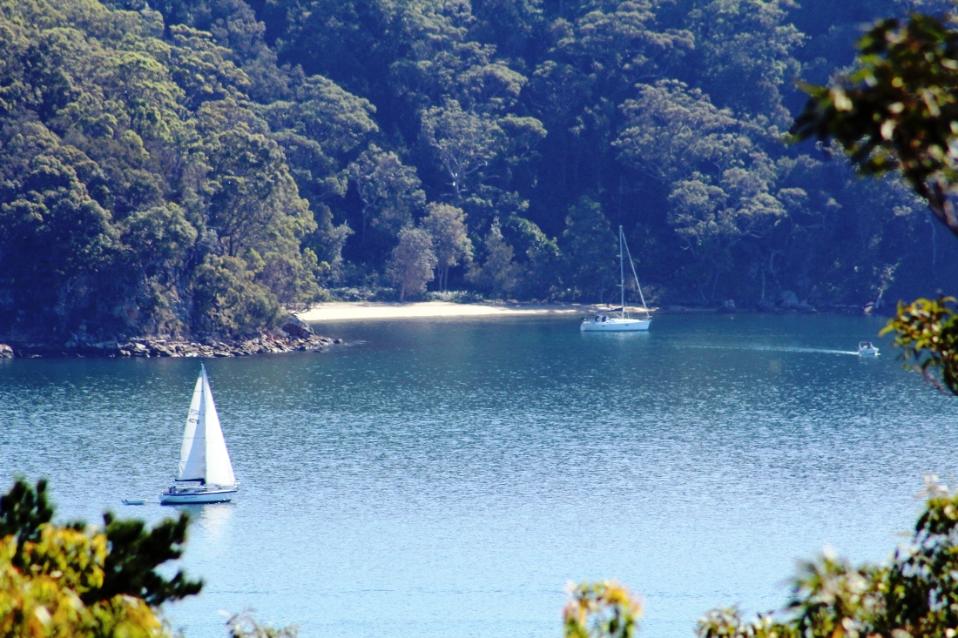
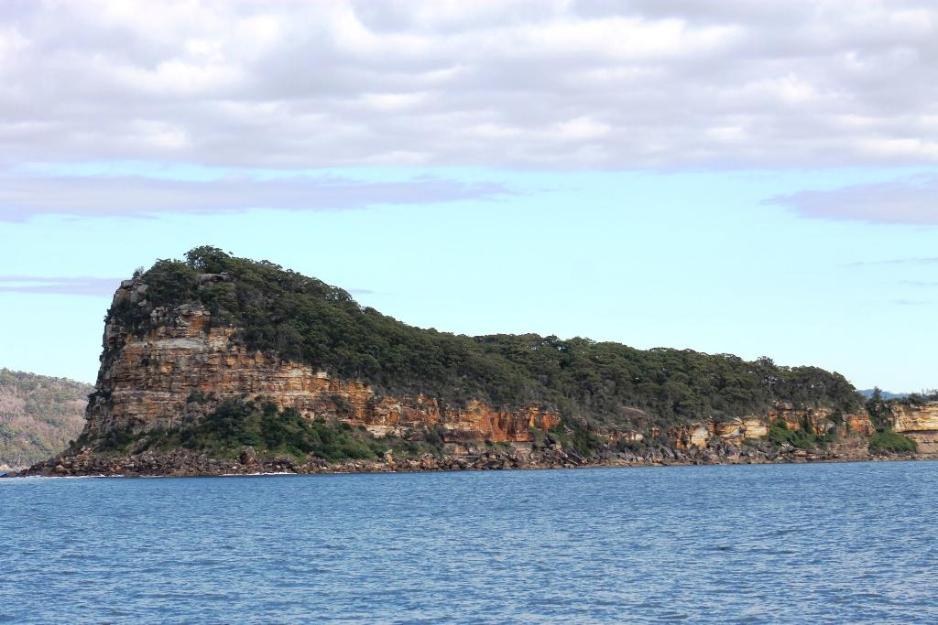
Bushcare In Pittwater
Where we work Which day What time
Avalon
Angophora Reserve 3rd Sunday 8:30 - 11:30am
Avalon Dunes 1st Sunday 8:30 - 11:30am
Avalon Golf Course 2nd Wednesday 3 - 5:30pm
Careel Creek 4th Saturday 8:30 - 11:30am
Toongari Reserve 3rd Saturday 9 - 12noon (8 - 11am in summer)
Bangalley Headland 2nd Sunday 9 to 12noon
Bayview
Winnererremy Bay 4th Sunday 9 to 12noon
Bilgola
North Bilgola Beach 3rd Monday 9 - 12noon
Algona Reserve 1st Saturday 9 - 12noon
Plateau Park 1st Friday 8:30 - 11:30am
Church Point
Browns Bay Reserve 1st Tuesday 9 - 12noon
McCarrs Creek Reserve Contact Bushcare Officer To be confirmed
Clareville
Old Wharf Reserve 3rd Saturday 8 - 11am
Elanora
Kundibah Reserve 4th Sunday 8:30 - 11:30am
 Mona Vale
Mona Vale Mona Vale Beach Basin 1st Saturday 8 - 11am
Mona Vale Dunes 2nd Saturday+3rd Thursday 8:30 - 11:30am
Newport
Bungan Beach 4th Sunday 9 - 12noon
Crescent Reserve 3rd Sunday 9 - 12noon
North Newport Beach 4th Saturday 8:30 - 11:30am
Porter Reserve 2nd Saturday 8 - 11am
North Narrabeen
Irrawong Reserve 2nd Saturday 2 - 5pm
Palm Beach
North Palm Beach Dunes 3rd Saturday 9 - 12noon
Scotland Island
Catherine Park 2nd Sunday 10 - 12:30pm
Elizabeth Park 1st Saturday 9 - 12noon
Pathilda Reserve 3rd Saturday 9 - 12noon
Warriewood
Warriewood Wetlands 1st Sunday 8:30 - 11:30am
Whale Beach
Norma Park 1st Friday 9 - 12noon
Western Foreshores
Coopers Point, Elvina Bay 2nd Sunday 10 - 1pm
Rocky Point, Elvina Bay 1st Monday 9 - 12noon
Desert Birds Head For The Coast
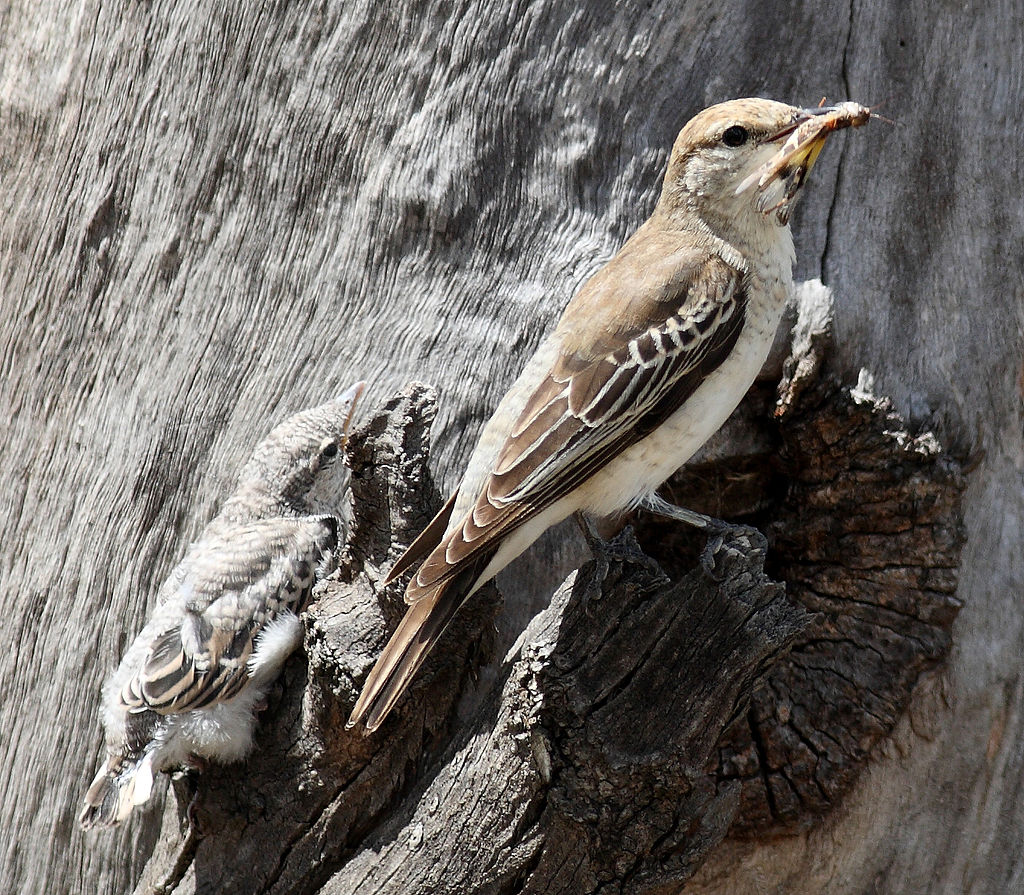
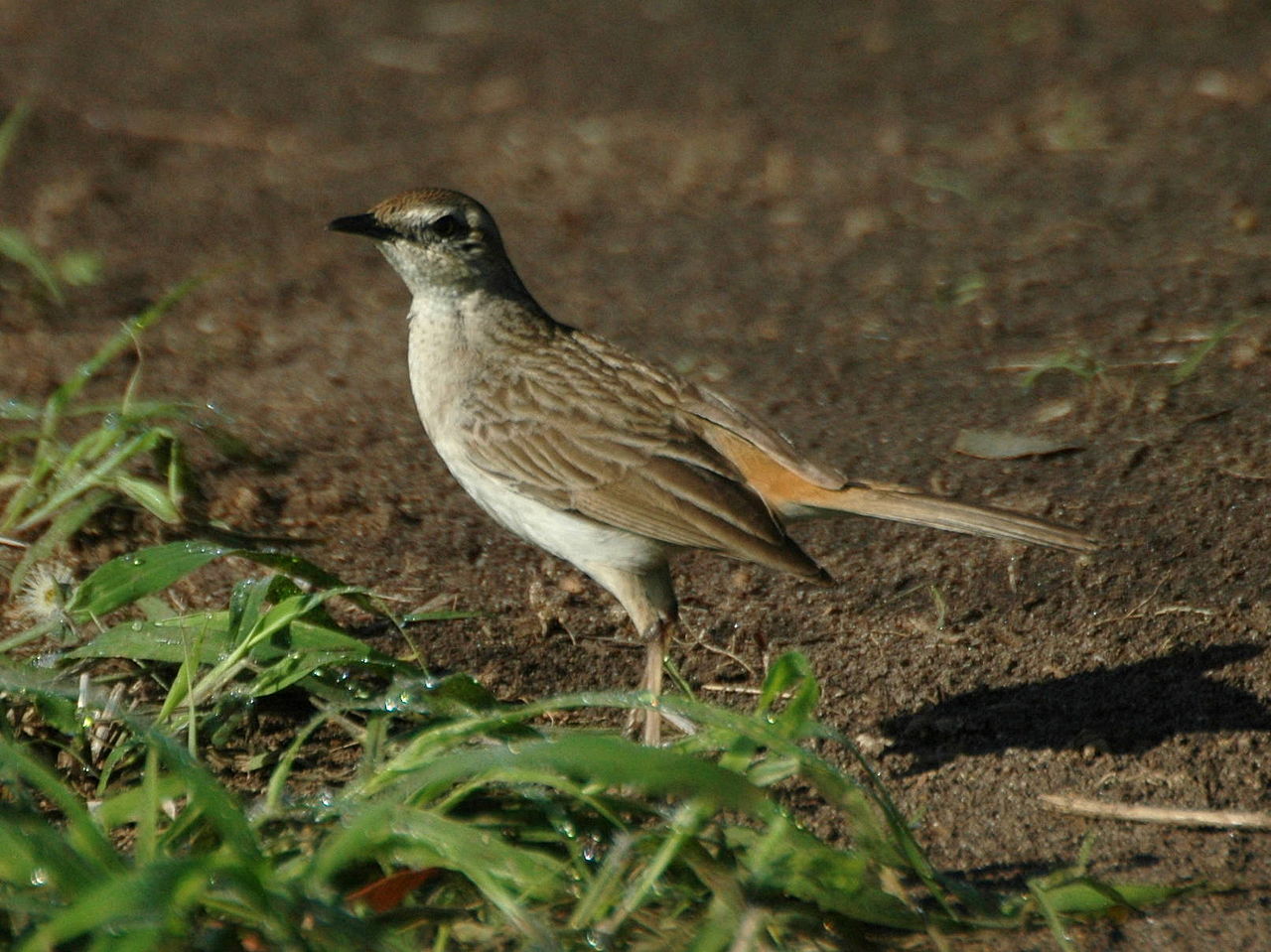
Funding Awarded To Councils For Coastal Planning
- Kempsey Shire Council: $55,000 - Macleay River, Killick Creek and Korogoro Creek coastal management program stage 2 investigations
- Kempsey Shire Council: $20,000 - Saltwater Creek coastal management program stage 1 scoping study
- Northern Beaches Council: $65,000 - open coast and lagoons scoping study
- Northern Beaches Council: $50,000 - coastal zone emergency action sub plan
- Coffs Harbour City Council: $30,000 - scoping study of Willis, Woolgoolga, Darkum and Hearnes estuaries
- Coffs Harbour City Council: $40,000 – Arrawarra Creek, Corindi River and Pipe Clay Lake coastal management program
- Central Coast Council: $35,000 - scoping study for the coastal management program of open coast and coastal lagoons and
- Rous County Council: $50,000 - Richmond River coastal management program stage 1 scoping study.
- Funding is being made available under the 2018-19 Coastal and Estuary Grants Program – planning stream.
Water may soon lap at the door, but still some homeowners don't want to rock the boat
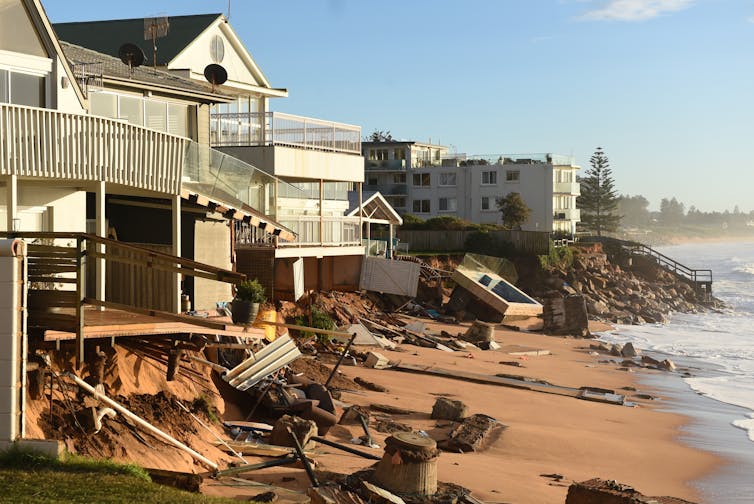
It is becoming increasingly possible that sea-level rise of a metre or more will occur this century. You might expect this threat to preoccupy coastal homeowners. But many deny the need to act, for fear their property values will fall.
This particular brand of climate denial presents a conundrum for governments and local councils, which must plan urgently for climate change. The very act of officials identifying homes exposed to sea-level rise can be vehemently opposed by the owners, let alone policies to deal with it.
This is an urgent problem. As long as we keep failing to reduce global carbon emissions, adapting to the inevitable changes in our climate is vital. But winning cooperation from coastal property owners requires more than just talking about the science.
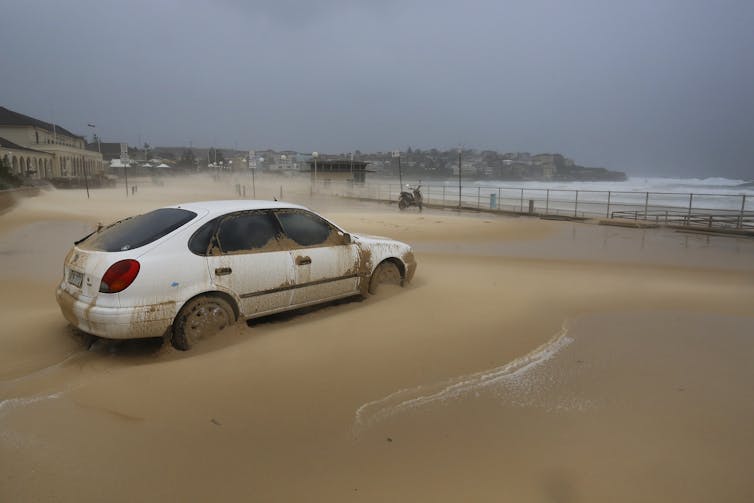
A Tide Of Irrefutable Facts
An Intergovernmental Panel on Climate Change report released this month warned sea levels are rising faster than we thought. This will lead to more flooding, storm surges and inundation than previously modelled.
In Australia, 85% of people live within 50km of the coast. In 2009, a federal assessment estimated that up to 247,600 Australian homes were at risk of inundation under a 1.1m sea-level rise scenario.
Read more: Rising seas threaten Australia's major airports – and it may be happening faster than we think
Authorities must manage this threat, which might include limiting development, protecting properties, or planning a retreat from some areas.
Yet our research shows that getting community support for such measures can be contentious and time-consuming.
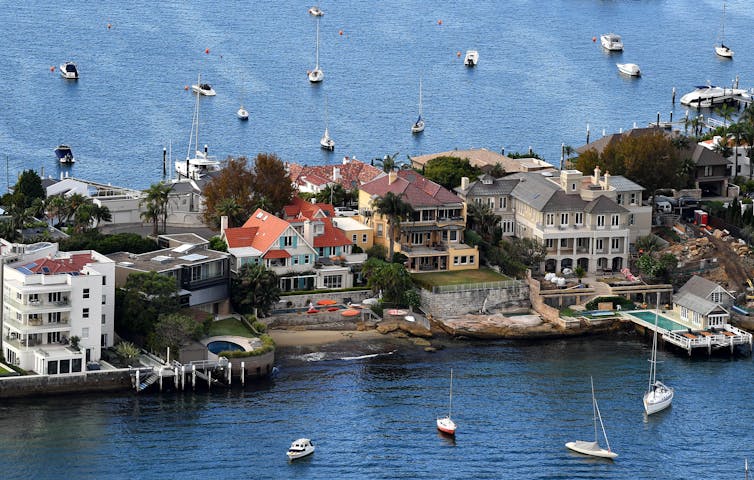
Property Values Are King
We researched Lake Macquarie in New South Wales, a council area of about 200,000 residents. Lake Macquarie City Council is a recognised leader in climate adaptation policy.
Lake Macquarie is a large coastal estuary vulnerable to sea-level rise. It has been identified as one of six council areas in Australia at highest risk of inundation. Up to 6,800 buildings in the area – about 10% – could be at risk from sea-level rise and storm surges this century.
In response, the council limited development in the most vulnerable areas and in 2012 began community consultation. This included working with residents to develop an adaptation plan, released in 2016.
Read more: A landmark report confirms Australia is girt by hotter, higher seas. But there's still time to act
In 2017 and 2018, we interviewed current and former councillors and council staff, local businesspeople and residents about the consultation process.
We found there was initially strong resistance to the council’s policy attempts. Community members expressed concern that acknowledging the need to adapt to sea-level rise would reduce property prices and increase home insurance costs.
The potential worst-case scenario, being required to abandon one’s home, was strongly resisted by the community.

Such community opposition is common across Australia. The Queensland property industry lobbied against state requirements that would have barred new development until climate adaptation plans were in place. At Lakes Entrance in Victoria, coastal residents have complained that adaptation measures are “taking away people’s money … because they’re going to suffer financial loss”.
The Problem Of Climate Denialism
In 2012 when community consultation began, property developer Jeff McCloy told the Sydney Morning Herald he was considering suing the council over its policies, describing concern over sea-level rise as “unjustified, worldwide idiocy”.
People have a tendency to want to see or feel the impacts of climate change before they agree to actions they see as conflicting with their priorities.
Property owners who live near oceans or lakes may not have observed rising sea levels or other climate change effects, and sometimes hesitate to believe it will be a future problem, even if flood map modelling shows otherwise.
The proliferation of climate scepticism in public discourse provides ready-made arguments to which some property owners, fearful of climate change impacts, can attach themselves.
Read more: Climate change: sea level rise could displace millions of people within two generations
We found that these broader debates around climate change impeded Lake Macquarie council’s ability to reach agreement with residents. Those opposing the policy arranged for prominent climate sceptics to speak at public meetings, and published anti-science opinion pieces in the local newspaper.

Where To Now?
The Lake Macquarie experience shows intensive, long-term, early efforts at community engagement can overcome some community opposition to climate adaptation. After four years of consultation, the council reached agreement with residents in two areas that affected land would be filled in over time, and there would be no forced retreat from homes.
The council is continuing to plan, with community involvement. It is developing suburb-specific adaptation plans designed so residents understand the science and embrace the solutions – including the chance to identify adaptation options themselves.
But across Australia, much work remains. As global carbon emissions continue to rise and the window to act closes, it is crucial that councils, governments and communities plan for whatever the future holds. This includes implementing adaptation plans that get property owners on board.![]()
Vanessa Bowden, Postdoctoral research fellow, University of Newcastle; Christopher Wright, Professor of Organisational Studies, University of Sydney, and Daniel Nyberg, Professor of Management, Newcastle Business School, University of Newcastle
This article is republished from The Conversation under a Creative Commons license. Read the original article.
Australian Engineers Declare Climate And Biodiversity Emergency
– Evaluate all new projects against the environmental necessity to mitigate climate breakdown, and encourage our clients to adopt this approach.– Advocate for faster change in our industry towards regenerative design practices, that respect ecological limits whilst enabling socially just access to resources and services, and a higher governmental funding priority to support this.– Advocate for and undertake 21st century economic assessments that take a whole-of-system, whole-of-life approach, and take into account the implications of expanding beyond ecological ceilings and failing to meet fundamental human rights and social justice obligations.– Join with other professions and work with government to develop a stronger and more comprehensive whole-of-government response to the climate emergency.– Collaborate with policy makers and planners, contractors and clients to further these broad outcomes.– Learn from and collaborate with First Nations to adopt work practices that are respectful, culturally sensitive and regenerative.– Upgrade existing infrastructure and technology for extended use when the opportunity arises for carbon emissions reduction.– Accelerate the shift to circular economy principles (e.g. minimise wasteful use of resources) and low embodied carbon materials in all our work.– Implement climate change and biodiversity mitigation principles.– Raise awareness of the climate and biodiversity emergencies and the urgent need for action in our organisations and networks.– Track and share stories of success as individuals and companies make climate positive choices, building pride and solidarity in the engineering sector and our role in delivering a healthy planet.– Share knowledge and research to that end, on an open source basis.
Tarkine Logging Protest Grows
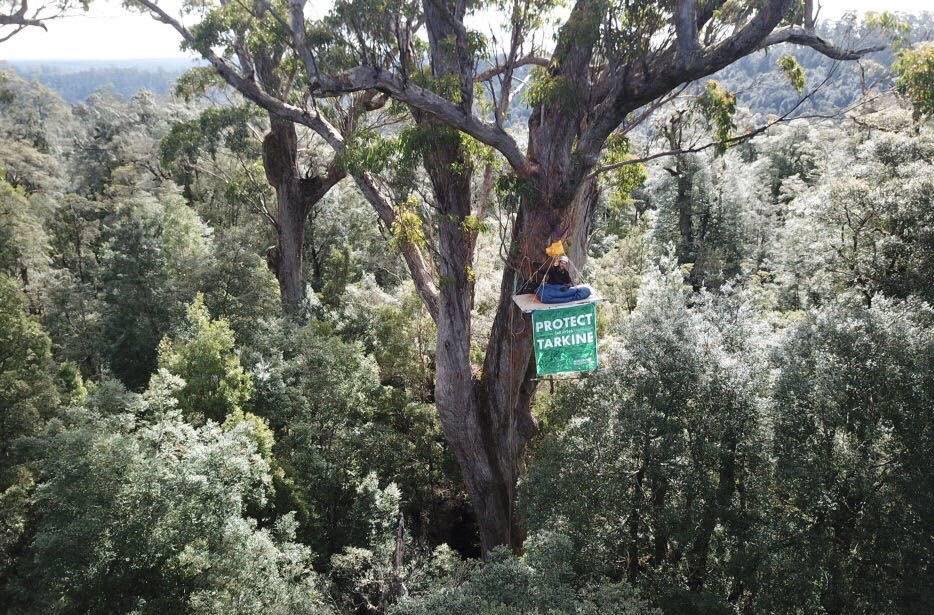
Bellingen Community Mass Protest Against Kalang Logging
I am aware of the proposed timber harvesting program in the Kalang River area by the NSW Forestry Corporation.Comprehensive information about this matter is available at: https://www.forestrycorporation.com.au/old11992200/our-forests/kalang-river-catchment This website also contains several videos where university-trained, professional forestry scientists explain their processes and protocols.
Forests that are suitable for timber production are divided into compartments and we generally expect to carry out a carefully planned operation to harvest the mature timber in each suitable compartment every 20 years or so before leaving the entire area to regrow naturally over another 20 or more years.
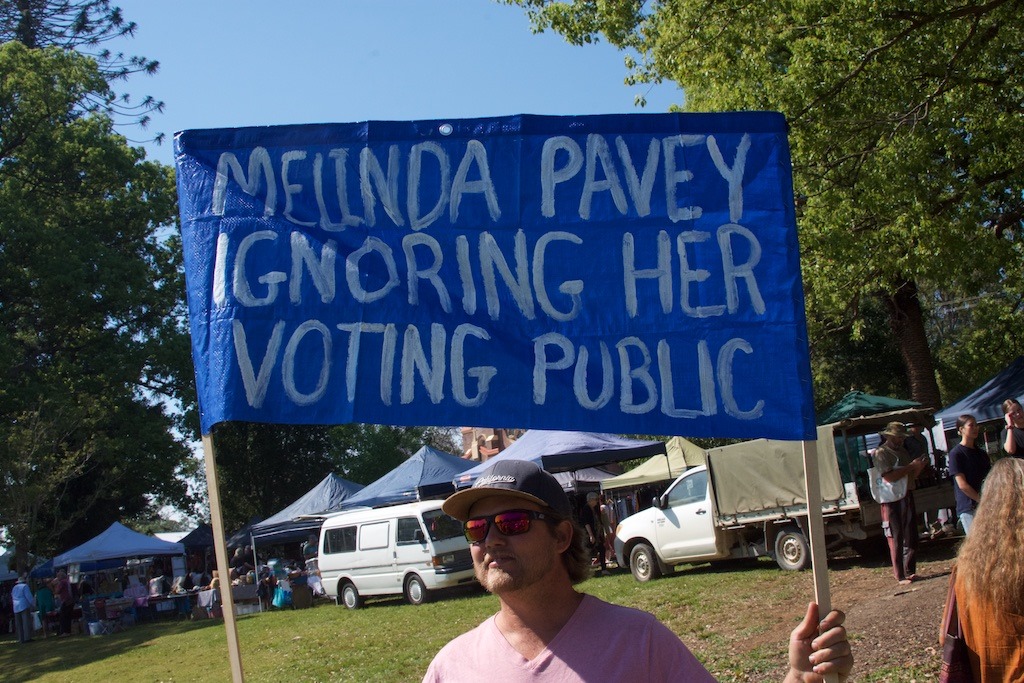
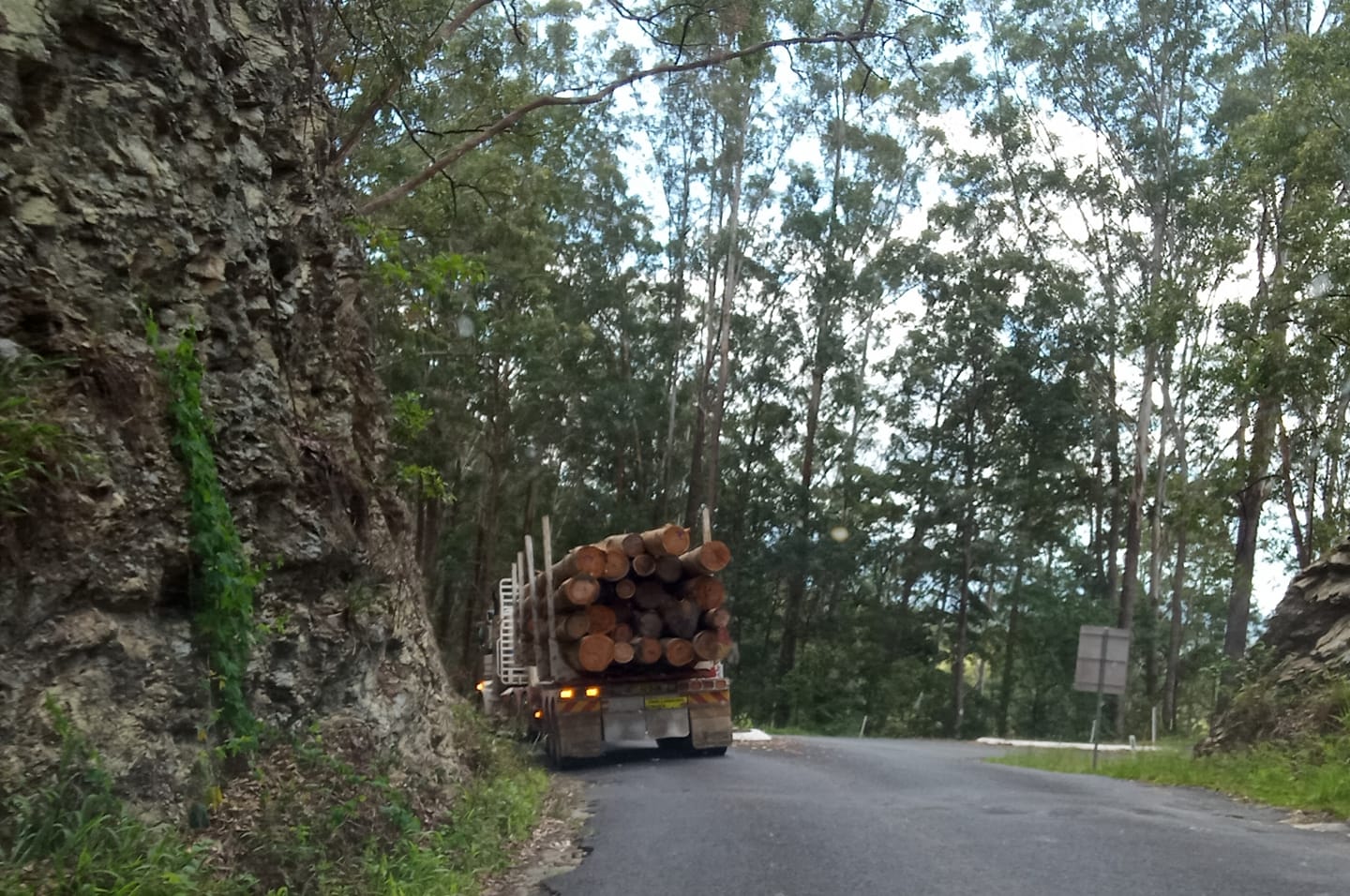
State Govt entered into 20-year contracts via the Forestry Department to provide particular quotas of our native hardwoood forests to timber corporations, in particular Boral. However, these quotas are not sustainable – that is, there is much more timber being cut from our public forests than can be sustainably regrown. So the biggest problem is that contracts have been signed with private corporations for the provision of timber from publicly-owned native forests that doesn’t actually exist. So it is just quotas. And hence, the movement into regions like the Kalang headwaters, which simply should be left alone.
It is also critically important to consider that Forestry Corporation native forest logging division operates at a massive financial loss to taxpayers. The Forestry Corporation relies on the huge profits made from the logging of softwood (pine) plantations to offset these losses. And all the while we all pay.
Betrayal of Community ConsultationForestry Corporation has betrayed our community consultation process and has rejected the concerns and requests put forward. In relation to forests in the Bellingen and Kalang valleys the community asked for no clearfelling, to use selective logging methods to preserve the delicate ecosystem. It requested bigger buffer zones for our waterways, and additional wildlife corridors to protect habitat for threatened native wildlife. It asked for buffer zones to protect neighbouring families from clearfelling. It asked for no chemicals to manage weeds, knowing that if they replanted the Blackbutt crop promptly after harvesting, chemicals would not be needed. Blackbutt is the dominant tree in the Tarkeeth plantations. It is extremely fast growing and does not require fertiliser.All of these requests were denied. Clear felling itself, creates a weed problem, adding to the non-sustainable chemical dependent monoculture plantations that are currently being managed.For example, In March 2018, 50 Bellingen families, mainly residents of Fernmount, wrote to Forestry Corporation seeking minor modifications to clearfell-burning and b-double haulage operations, to minimise adverse impacts on the community, and reduce risks to the health, safety and property. The noise, dust and smoke pollution affect some residents very badly. (In 2016, Forestry Corporation’s senior manager Dean Kearney informed residents that operations would continue for up to a decade).Residents asked Forestry Corporation:— To immediately and permanently discontinue post-harvest fires in Tarkeeth State Forest and employ safe methods to reduce and utilise wood residue, for example: mulching, chipping, pulping, salvage, collection of firewood, cease the felling of immature trees.— That Sweedmans Lane (a 1-kilometre laneway designated for B-double haulage) be resurfaced with bitumen to bring an end to the severe dust pollution, frequent roadworks, and sudden road closures that are having a severe adverse impact on families living in Sweedmans Lane and residents who depend on the road for access.— That Forestry Corporation adopts standard working hours for ALL future harvesting and haulage operations in Tarkeeth State Forest.— For Forestry Corporation to constructively engage with our Tarkeeth Forest Neighbour Stakeholder Forum, and genuinely address our concerns.
After a few months Forestry Corporation wrote to all the families, saying NO to every request, and refusing to engage with the forest neighbour forum.
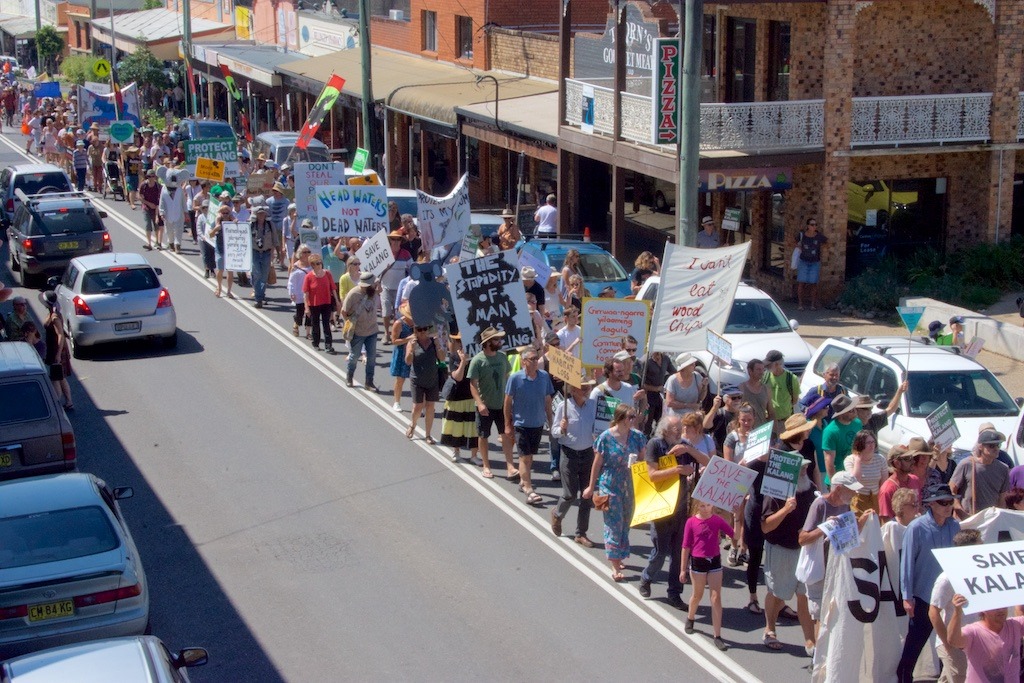
Grants Available To Reduce Climate Change Impacts
2019 Green Globe Award Finalists Announced
Murray-Darling Basin Community Survey
Snowy 2.0 Environmental Impact Statement
Aussie Bread Tags Collection Points

Bathroom Bugs
Local Surfers In Woolworths Australian Junior Surfing Team For Vissla ISA World Junior Surfing Championship

Cedar Leigh-Jones - photo by Georde Grigor / Surfing NSW

North Narrabeen's Jamie Thomson - photo by Ethan Smith/Surfing NSW


Narrabeen's Tru Starling, Day 2 of Hydralyte Sports Shoalhaven Pro Junior 2019 - photos by Ethan Smith/Surfing NSW
Australian Pollinator Week 10-17 November
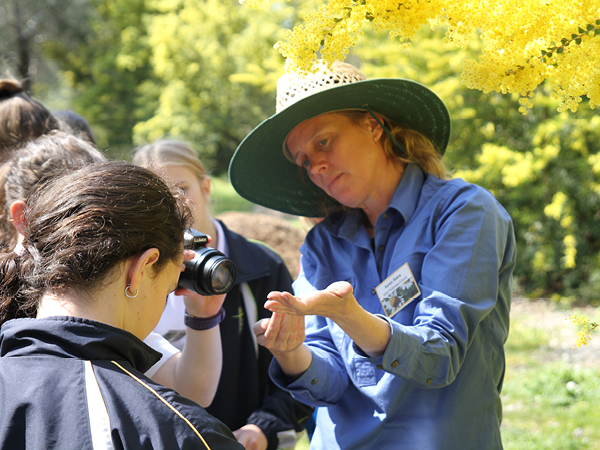
Spark Tank: Watch Young People Win Cash & Expert Support For Their Ideas!
- Austin & Lucas: E-waste recycling
- Chloe & Tegan: Youth Therapist app
- Alex & Luka: Project AL, Active Life for youth app
- Rebecca, Nicolas & Jack: Future Tech: STEM program for young people on the autism spectrum
- Jvon & Aethan: Vertical micro-green farms
- Ethan & Hayley: Sand Bar Project, advising youth on the negative effects of using alcohol and drugs

Davistown Putt Putt Regatta And Wooden Boat Festival 2019: 20th Year Anniversary
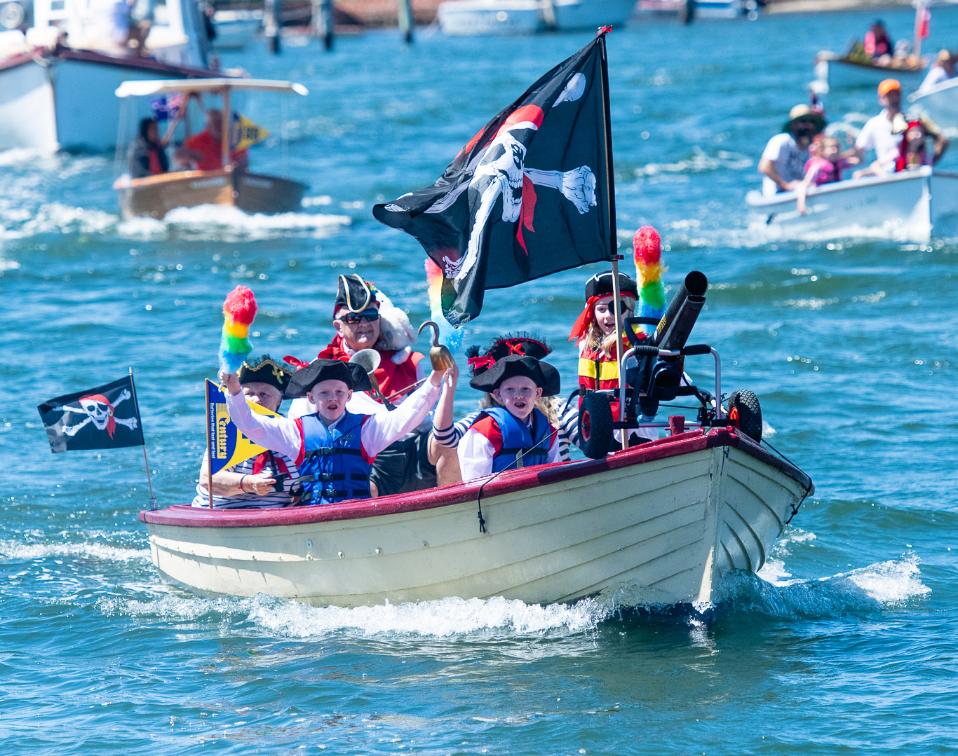
On Sunday October 20th Michael Mannington (Community Photography and Pittwater Online News) attended the 20 Year Anniversary of the Davistown Putt Putt Regatta and Wooden Boat Festival.
The genesis of the Regatta was the social and competitive gathering of “Putt Putts”, as they are now known, by the early builders, residents and boating enthusiasts of the district. Regattas were often held at Davistown in the early 1900’s. Challenges between boat owners/builders were designed to determine who had the fastest putt-putt, or who could row the quickest. Pittwater residents were competitors in these early Central Coast Regattas, while our Offshore Community STILL holds an annual Putt Putt Regatta around or just after the Australia Day celebrations annually.
Basics The Ingredients For Student Success
- A stronger emphasis on STEM subjects;
- Reducing the amount of content in the curriculum so students have time to build in depth subject knowledge and develop the skills needed to apply knowledge in the real world;
- Flexible progression that uses levels of attainment to organise syllabuses so students are recognised and challenged according to where they are on the continuum of learning.
New Curriculum Making It Easier For Students To Take Up A Trade
Maths To Be Compulsory For Students
'My friends are taking MDMA at raves and music festivals. Is it safe?'

My friends are taking ecstasy at raves and music festivals. Is it safe? — Anonymous
Key Points
- no drug use, including ecstasy, is 100% safe
- festivals can present unique risks
- look out for friends, know the risks and where to get help.
What Is Ecstasy Or MDMA?
Ecstasy is a slang term for drugs meant to contain 3,4- methylenedioxymethamphetamine (MDMA), a stimulant that can also cause mild hallucinations at high doses. While ecstasy was traditionally sold as tablets, it’s increasingly sold in crystal, capsule and powder forms.
According to the most recent data, only 1% of Australians aged 12-17 said they had tried ecstasy. However, studies suggest young Australians who attend music festivals are much more likely to have tried it.
So, Is It ‘Safe’?
There seems to be a common perception ecstasy is “safe”. But no drug use — legal or illegal — is completely safe. While drug experts rank ecstasy as less harmful than other drugs, such as “ice” and alcohol, there are still significant risks involved:
given ecstasy is illegal, the market is unregulated. As a result, drugs sold as “ecstasy” commonly do not contain MDMA and may contain something far more dangerous. This means the effects can be unpredictable
even if your drugs contain MDMA, the dose or potency can vary hugely. Recently, very high purity ecstasy has been detected in Australia. This can significantly increase the risk of overdosing or having serious side-effects
even pure MDMA at normal recreational doses can be risky in the wrong conditions (for instance, when it’s very warm)
common short-term effects also include increased heart rate and body temperature, teeth grinding and anxiety. While evidence on the long-term effects of taking MDMA is still emerging, there may be lasting impacts on memory, mood, cognition and sleep.
What Are The Risks When Taking It At Festivals?
In recent years, there have been more reports of drug-related deaths at festivals. While the media typically describes deaths involving ecstasy as “overdoses”, most ecstasy-related deaths are not the result of simply taking too much.
Drug experiences can be influenced by lots of different things and music festivals can sometimes result in a “perfect storm” of risk factors. For example, an experienced male taking an ecstasy pill at a quiet gathering at home is likely to have a very different experience to an inexperienced female taking her ecstasy pills at a crowded festival on a 35℃ day.
Females, those with lower body weight, and/or those who haven’t used ecstasy before, and therefore haven’t built up any physical tolerance, should use a smaller dose.
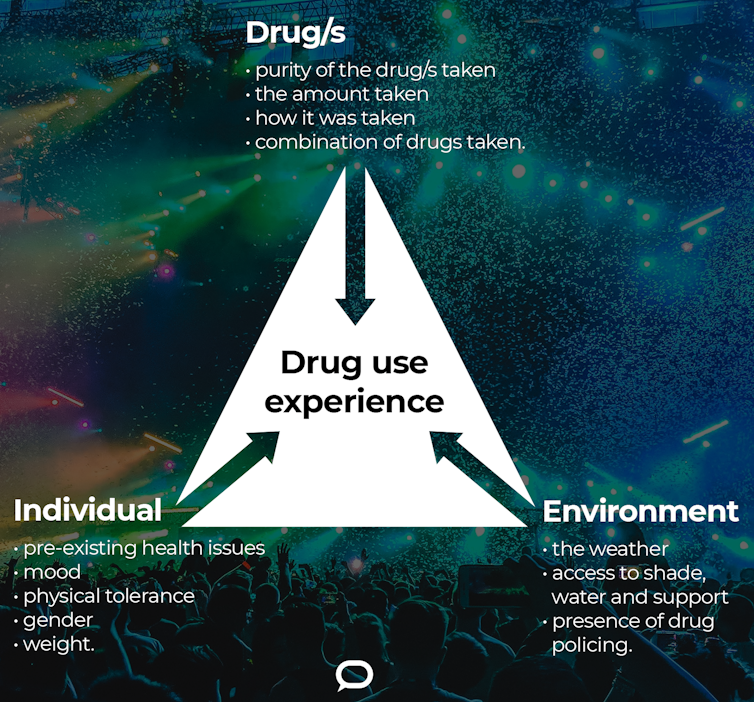
Some key risks at music festivals include:
hyperthermia aka heatstroke: MDMA affects the body’s ability to regulate temperature (it can increase body temperature and also make it harder to cool down). Environmental factors at festivals such as warm weather, crowds and dancing can significantly increase the risk of overheating (see tips for staying cool)
hyponatremia aka water intoxication: MDMA can disrupt the body’s water/electrolyte balance (can make your body retain water). While you need water to avoid dehydrating, drinking too much can also be dangerous. Read up on these guidelines on dehydration and overhydration for more information
dodgy on-site sellers: UK research found people buying drugs on-site (inside the festival grounds) were more than twice as likely to buy drugs that did not contain what they thought. There have been cases where festival goers thought they were buying MDMA but actually bought N-ethylpentylone (a riskier stimulant linked to psychosis and deaths)
policing or legal problems: festivals often have a heavy police presence with sniffer dogs and being caught with drugs can lead to possession or supply charges. However, it’s very important not to panic and swallow your drugs if you see sniffer dogs. This has been linked to at least three festival deaths in Australia.
Worried About Your Friends?
If you’re going to a rave or festival and suspect some of your friends might take illicit drugs, it’s important to be aware of the risks, look out for your friends and know where to get help. Here are some tips:
make emergency plans with friends: download the festival map, have a meeting point, make sure mobiles are charged, stick together and know where on-site support services are
look out for red flag symptoms (for instance, feeling hot, unwell, confused or agitated) and never be scared to seek help from on-site medical or support services. They’re there to help you, not judge or arrest you
be informed: Drugaware, Dancewize and Boomtick all have great information about drugs and how to keep safe.
I Need to Know is an ongoing series for teens in search of reliable, confidential advice about life’s tricky questions.
If you’re a teenager and have a question you’d like answered by an expert, you can:
- submit your question anonymously through Incogneato, or
- DM us on Instagram.
Please tell us your name (you can use a fake name if you don’t want to be identified), age and which city you live in. Send as many questions as you like! We won’t be able to answer every question, but we will do our best.![]()
Jodie Grigg, Research Associate at the National Drug Research Institute, Curtin University
This article is republished from The Conversation under a Creative Commons license. Read the original article.
Monstrous Galaxy From Dawn Of The Universe Accidentally Discovered

Narrabeen Masters Rugby Recognition

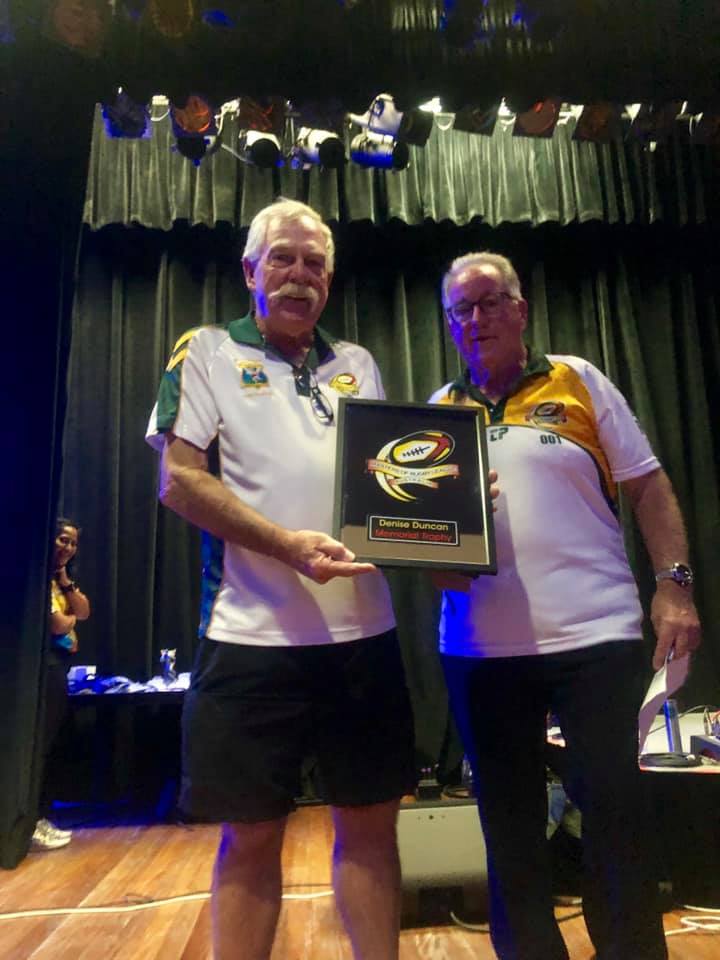
No Time To Connect: Social Needs Of Older People Unmet By Aged Care Workers
- Numbers of aged care places have outstripped workforce growth, with no increase in the ratio of fulltime equivalent care workers to residential care places since 2003.
- In the same period, residential care workers’ skill profiles have significantly deteriorated.
- Personal care workers perform an increased proportion of direct care work in residential settings, up from 57% (2003) to 72% (2016). Correspondingly, the share of nurses and allied health professionals has declined.
- Across residential and home care services, 90% of care workers agreed they had no time to respond to unexpected needs, or to spend time with an older person they found to be in low spirits.
- More than three-quarters (78%) said they had insufficient time to support older people to do things for themselves, such as use a walker instead of a wheelchair.
- Only 37% felt their managers understood the importance of workers’ relationships with older people, with many reporting they were seen to be “slacking off” if they attended to a client’s social and emotional needs.
- The psychosocial needs of older people be at the forefront of the design of aged care services.
- Aged care funding be increased to sufficient levels to enable services to be provided to all older people who need support, and this funding be care-centred.
- The aged care system’s human resources be regulated to ensure that rostering and daily work arrangements allow workers enough time to care and to offer continuity of care relationships.
- Workers have relevant practice and relational skills to deliver high-quality care, and be supported by managers so that they develop meaningful relationships with older people.
Supporting People With Chronic Pain To Access Services
- $1 million to Painaustralia to support consumer awareness and education for people affected by pain.
- $1 million to help train GPs to enable them to participate more effectively in pain management care.
- $500,000 for a public education campaign specifically focused on the management of pain and the use of opioids.
- $4.3 million to deliver outreach pain management specialist services in regional, rural and remote areas of Australia.
Underwater Grandmothers Reveal Big Population Of Lethal Sea Snakes

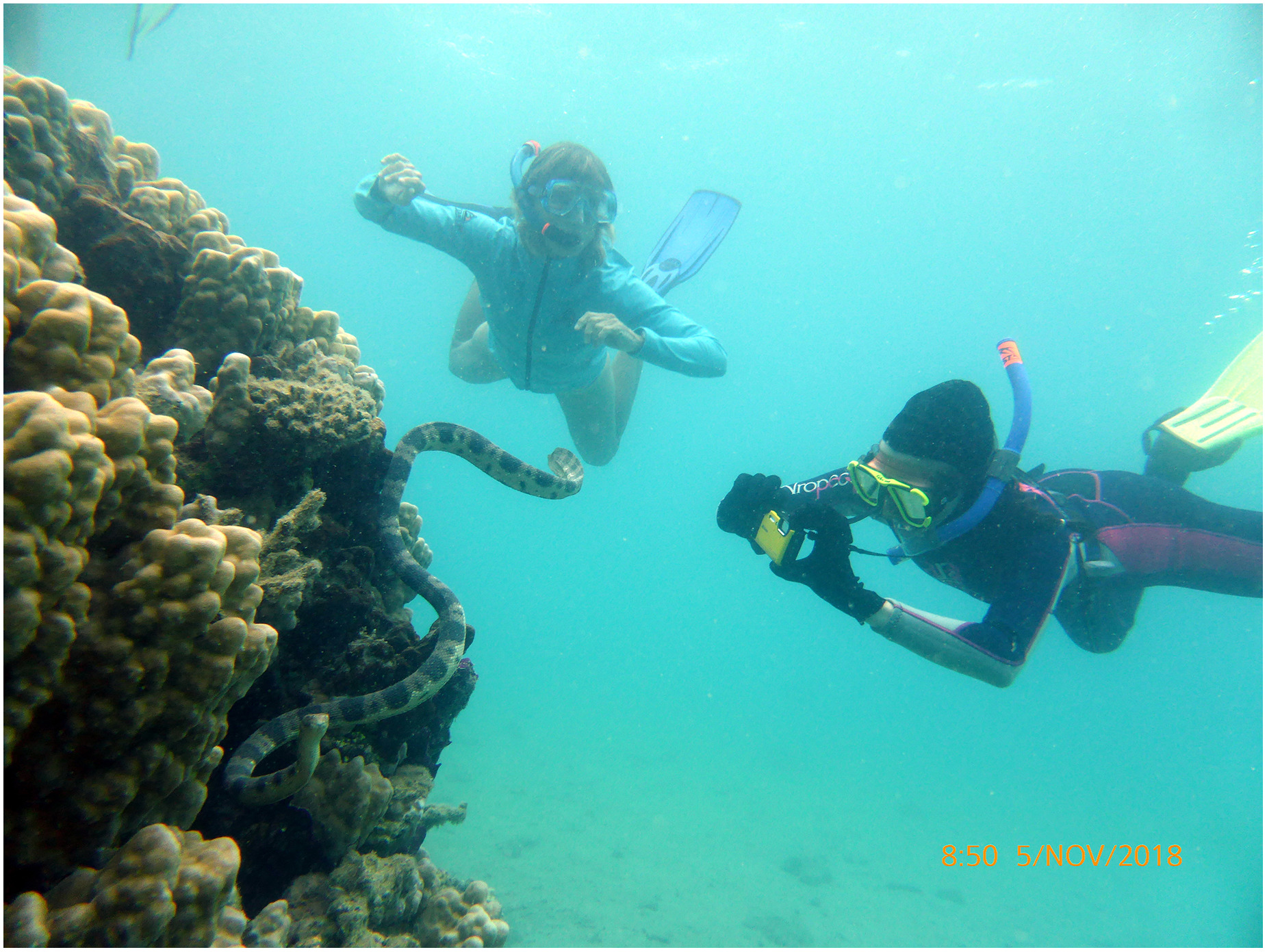
Vitamin D Deficiency Is Associated With Poor Muscle Function In Adults Aged 60+
- The prevalence of muscle weakness was twice as high among older adults with vitamin D deficiency (40.4%) compared with vitamin D adequacy (21.6%).
- Similarly, impaired 'muscle performance' was 3 times higher in older adults with vitamin D deficiency (25.2%) compared with vitamin D adequacy (7.9%).
- Based on more complex statistical analysis, the study showed that vitamin D deficiency significantly increased the likelihood of impaired muscle strength and performance.
- The study confirmed the associated benefits of physical activity. Older adults partaking in regular moderate physical activity had significantly lower likelihood of poor muscle strength and physical performance.
